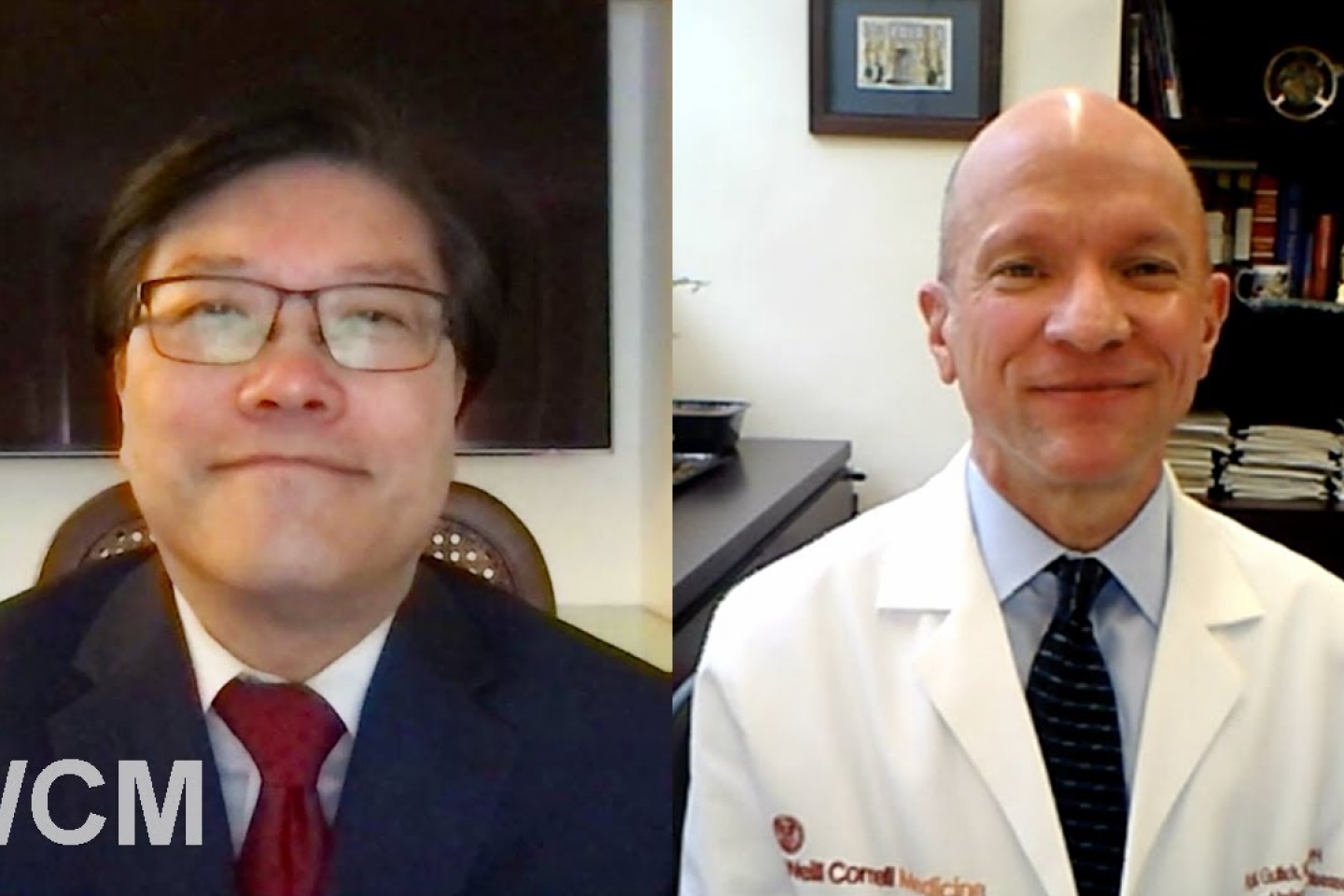
Now that the Food and Drug Administration has approved two COVID-19 vaccines for emergency use authorization, many states have begun administering injections to frontline healthcare workers and some of the country’s most vulnerable patients.
“We are truly experiencing history in the making,” says Augustine M. K. Choi, MD, the Stephen and Suzanne Weiss Dean, Weill Cornell Medicine (WCM), and provost for Medical Affairs, Cornell University. At WCM, Dean Choi adds, “Workers are already getting the vaccine, and the general public will get it in the months and weeks to come.”
Dean Choi and Roy Gulick, MD, MPH, chief of the Division of Infectious Diseases, recently discussed the vaccine, how it works, and its administration in an online question-and-answer session. Here are the five key takeaways from the webinar that you should know.
That’s because the injection only contains “a tiny sliver of the genes of the virus called RNA,” Dr. Gulick explains. “We’re not using all the genes from the virus….So you could not get it from receiving the vaccine.”
Then the vaccine is injected into the muscle of the upper arm, and “The muscle cells take up that RNA and use it as a template to make the spike protein of the Corona virus….The thinking goes that if you ever come into contact with the real virus, your immune system is already primed to do it.”
When the FDA was advising drug companies on the design of the vaccines, they said they were looking for them to be about 50% effective.
“What we learned from the clinical trials is each of the vaccines is approximately 95% effective,” Dr. Gulick explains. “That’s as good as any other vaccine. We have the measles vaccine, for example, which is about 90% effective.”
Though the approved vaccines have not been studied in comparison with one another, “They both look like excellent vaccines,” Dr. Gulick says.
The approved vaccines come in two doses. The first injection, Dr. Gulick says, “primes the immune system.”
That’s “somewhat helpful,’ he says, perhaps offering patients up to approximately 50% protection. “But to achieve that 95% protection, you really do need that second shot to make sure that the immune system is fully primed to make a response.”
The two Pfizer vaccine injections are separated by three weeks, and the Moderna injections are given four weeks apart.
Side effects are, “telling us is that the immune system is responding to the vaccine,” he says. “It’s already recognizing it as a foreign protein that needs to be dealt with.”
The most common side effects have been local pain or soreness at the site of the injection. Though rare, some patients have experienced redness or swelling at that site and, some have experienced fatigue, headache, or muscle or joint aches.
Some groups of people simply have not yet been studied, Dr. Gulick says.
In addition to people who may be allergic to a component of the injections, pregnant or breastfeeding women; children under the age of 16; those with compromised immune systems, such as patients with cancer, transplanted organs, or uncontrolled HIV infections have not yet been included in clinical trials.
Dr. Gulick adds: “People really should have conversations with their own doctors before they receive the vaccine if they’re in those specific groups.”
Watch the full COVID-19 vaccine Q&A session below.